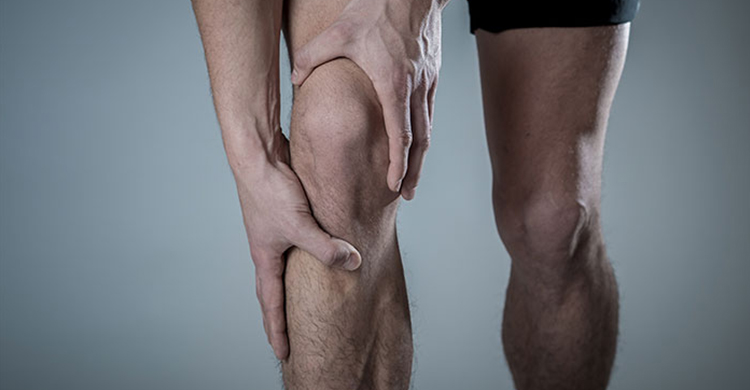
Definition of Baker’s Cyst
Baker’s cyst, also known as a popliteal cyst, is a fluid-filled sac that causes a lump at the back of the knee. This can lead to discomfort and limited movement. The cyst can be painful when bending or straightening the knee.
Usually, this condition is caused by issues affecting the knee joint, such as joint inflammation or cartilage injury. Treating the underlying cause often alleviates the problem.
Although Baker’s cyst doesn’t cause long-term damage, it can be very uncomfortable and may also rupture. The fluid can then spread down the calf and cause bruising around the ankle.
Causes of Baker’s Cyst
Synovial fluid is a clear fluid that normally circulates through the cavities in the knee joint. Sometimes the knee produces too much of this fluid. Increased pressure forces the fluid to the back of the knee through a one-way valve, where it creates a bulge.
Severe knee swelling leads to the formation of this condition. The most common causes of this condition are:
- Damage to the knee cartilage (meniscus).
- Knee joint inflammation.
- Joint inflammation.
- Other knee conditions causing joint inflammation.
Because the knee is a complex joint, it can easily be injured. Such injuries can lead to inflammation that may result in a Baker’s cyst. Blood clots can also cause bruising and swelling behind the knee and in the back of the calf.
Risk Factors for Baker’s Cyst
There are several conditions associated with an increased risk of Baker’s cyst, including:
- Injury to the knee area such as meniscus injuries.
- Knee joint inflammation.
- Other knee injuries.
Symptoms of Baker’s Cyst
Sometimes this condition doesn’t cause any symptoms at all. You may only experience knee pain from the initial damage that leads to this cystic condition. When the knee or cyst swells, it can exacerbate the pain and limit how much you can move your knee.
At this stage, symptoms of Baker’s cyst typically manifest, including:
- Fluid-filled lump behind the knee.
- Pain.
- Knee stiffness.
- Limited knee bending and range of motion.
- Knee and/or leg swelling.
In some cases, Baker’s cysts can also cause swelling and redness in the lower leg resembling symptoms of blood clotting. This is an emergency situation requiring immediate medical attention.
Diagnosing Baker’s Cyst
Diagnosis can be made through a series of examinations to determine what might be causing it, including:
- X-rays. This test doesn’t always show the Baker’s cyst itself but can be used to see if there’s joint inflammation in the knee. Arthritis is one possible cause of Baker’s cysts.
- Magnetic Resonance Imaging (MRI). This test uses magnetic waves to show detailed images inside the body.
- Ultrasound. Ultrasound tests are performed using sound waves to determine whether the lump is solid or fluid-filled.
Treatment for Baker’s Cyst
Sometimes Baker’s cysts will disappear on their own. However, if the cyst is large and causing pain, the doctor may recommend the following treatments:
- Medication. The doctor may inject corticosteroid medication, such as cortisone, into the knee to reduce inflammation. This can alleviate pain, but it doesn’t always prevent the cyst from recurring.
- Fluid drainage. This is done by draining fluid from the knee joint using a needle. It’s called needle aspiration and is often performed alongside ultrasound.
- Physical therapy. Ice packs, compression stockings, and crutches can help reduce pain and swelling. Gentle range-of-motion exercises and strengthening exercises for the muscles around the knee can also help alleviate symptoms and maintain knee function.
If possible, the doctor will also treat the underlying cause of the Baker’s cyst. If the doctor determines that a torn cartilage is causing excess synovial fluid production, they may recommend surgery to remove or repair the torn cartilage.
Complications of Baker’s Cyst
Baker’s cysts rarely cause complications. However, in some cases, the cyst can rupture and fluid leaks into the calf area. This can cause symptoms such as:
- Sharp pain in the knee.
- Swelling in the calf.
- Redness in the calf or a sensation of fluid flowing in the calf.
These signs and symptoms are very similar to those of a blood clot in the leg veins. If you experience swelling and redness in the calf, prompt medical attention may be needed.
Preventing Baker’s Cyst
The best way to prevent Baker’s cysts is to prevent knee injuries. Some ways to prevent knee injuries include:
- Wearing appropriate footwear.
- Using the ball of the foot to pivot instead of the knee.
- Properly warming up before exercising and cooling down afterward.
- Seek immediate treatment when experiencing knee injuries. For example, apply cold compress, rest, wear compression stockings, and elevate the injured leg. Also, seek medical attention if deemed necessary.
When to See a Doctor?
If you notice a lump behind the knee, accompanied by pain and swelling, promptly consult a doctor to receive appropriate treatment.




